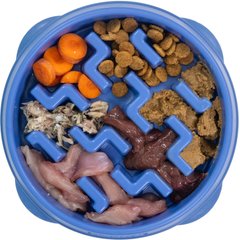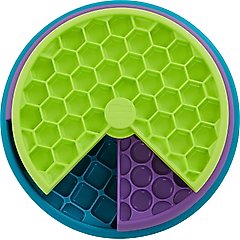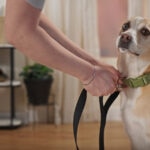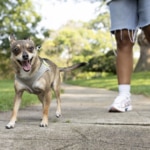How To Give a Dog the Heimlich Maneuver
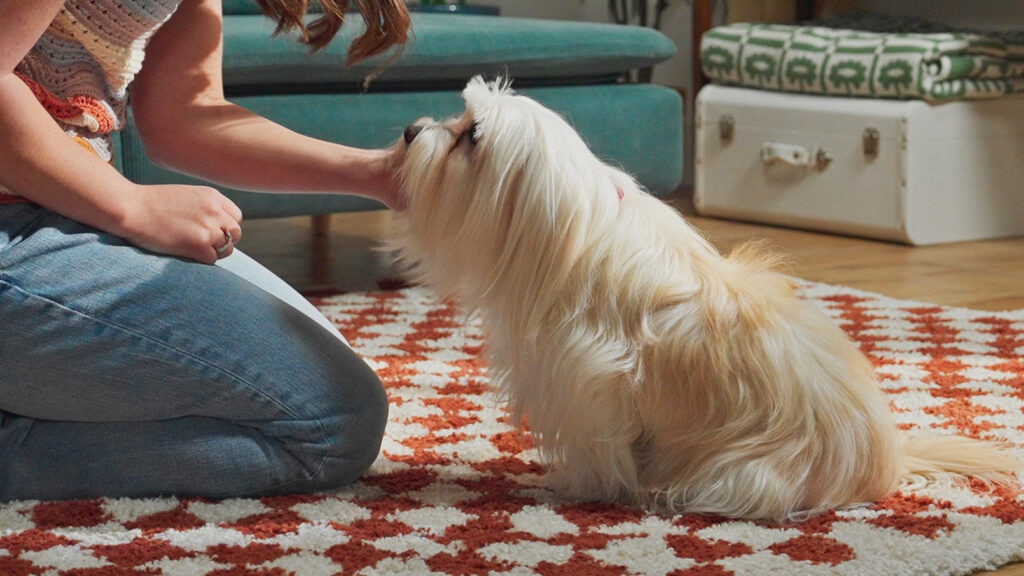
Photo by Chewy
When your dog experiences an emergency, knowing precisely what to do and how to do it can make all the difference. That said, learning how to perform the Heimlich maneuver for dogs is an excellent skill all pet parents should familiarize themselves with.
Here’s how to perform the Heimlich maneuver on small and large dogs.
Key Takeaways
- Signs your dog is choking include coughing, wheezing, difficulty breathing, and hacking sounds.
- Only administer the dog Heimlich maneuver if your dog is actively choking and cannot breathe, is unresponsive, and/or collapsing due to a blocked airway.
- The method for administering the Heimlich maneuver to a dog depends on their size.
Signs Your Dog Is Choking
If your dog is choking, they may suddenly become panicked or distressed. Elizabeth Moses, DVM, an emergency veterinarian at the Veterinary Emergency Group (VEG) in Tampa, Florida, says to look for the following signs:
- Gagging/retching
- Coughing or hacking sounds
- Excessive drooling
- Wide eyes
- Difficulty breathing
- Wheezing
- Pawing at the mouth
- Blue or pale gums or tongue (a sign of oxygen deprivation)
- Sudden collapse in severe cases
Sometimes dogs will make no sound at all when they’re choking, which is a sign that their airway is completely blocked (a severe emergency). They may have wide eyes or look and act panicked.
When To Give Your Dog the Heimlich Maneuver
You should only give your dog the Heimlich maneuver if they are choking and facing a life-threatening situation. Dr. Moses advises the following:
Do the dog Heimlich only if:
- Your dog is actively choking and cannot breathe.
- They’re unresponsive or collapsing due to a blocked airway.
Time is critical, so do not delay.
Don’t attempt the Heimlich if:
- Your dog is still breathing or coughing (they may be able to clear the object themselves).
- You’re unsure if your dog is choking.
“If they can move air, it’s best to let them try to clear the obstruction on their own while you head to the vet,” says Sarah Cortright, DVM, veterinarian and chief medical director for the Underdog Community Project in the greater Los Angeles area.
How To Give the Heimlich Maneuver to Dogs
If your dog is choking and cannot breathe, it’s imperative to administer the Heimlich maneuver to help dislodge the foreign object and restore their breathing.
Here’s how to help a choking dog based on their size.
How To Give the Heimlich Maneuver to Large Dogs
- Wrap your arms under your dog’s ribs.
- Make a fist, cup the other hand around it, and thrust your fist into your dog’s belly toward the ribs five times.
- If your dog is still choking, give five sharp blows between their shoulder blades.
- If that doesn’t work, lift your dog’s hind legs like a wheelbarrow to encourage the foreign object to slide forward.
- Remove the object with your fingers.

Photo by Chewy
How To Give the Heimlich Maneuver to Small Dogs
- Wrap your arms under your dog’s ribs.
- Make a fist, cup the other hand around it, and thrust the fist into your dog’s belly toward the ribs five times.
- If your dog is still choking, give five sharp blows between their shoulder blades.
- If that doesn’t work, lift your dog by their hips/thighs and carefully swing them side to side.
- Remove the object with your fingers.

Photo by Chewy
What To Do After Performing the Heimlich Maneuver
Even if the item’s no longer blocking your dog’s airway or they seem OK, there are still necessary steps to take after performing the Heimlich maneuver.
- Check their breathing. “Even if you believe the object was successfully dislodged, check if your dog is breathing normally,” Dr. Moses says. Watch for steady chest movement, standard gum color (pink, not pale or blue), and listen closely for wheezing, coughing, or labored breaths that could signal lingering airway distress.
- Look for any remaining objects. Gently open their mouth and check under the tongue, along the roof of the mouth, and as far back into the throat as you can safely see. (But be cautious because a frightened or distressed dog may act aggressively and bite.)
- Get to an emergency vet immediately. “Choking incidents can cause swelling, aspiration, or internal trauma that isn’t always visible right away,” Dr. Cortright says. Even brief choking episodes require urgent medical evaluation. In some cases, the Heimlich maneuver itself can cause damage that needs immediate medical attention.
- Begin CPR if there’s no pulse. If your dog is not breathing or has no pulse, begin dog CPR immediately while heading to the vet. Focus on chest compressions and rescue breaths following canine CPR guidelines, and try to have someone call the vet en route so they’re prepared when you arrive.
Pro Tip: Keep a list of emergency vets handy so you can head to one immediately in case of an emergency. Time is critical.
How Can I Prevent My Dog From Choking?
Choking can happen in an instant, but so many incidents are preventable with a few simple precautions.
Here’s how to reduce the risk and help keep your dog safe during meals, play, and everyday life.
Skip All Potential Choking Hazards
Even if your dog loves those tiny toys or rawhide bones, it’s best to skip any potential choking hazards altogether.
“Avoid toys and chews that are too small; if it can fit fully in their mouth, it’s a choking hazard,” Dr. Cortright says. “Also, skip cooked bones and hard treats that can splinter.”
Slow Down Their Eating
Feed fast eaters with a slow-feeder bowl, like the Outward Hound Fun Feeder Slow Feeder Dog Bowl, or puzzle feeder, like the Outward Hound Lickin’ Layers, to prevent gulping.
Recommended Products
Also, Dr. Cortright says to supervise your dog during play and meals, especially if they tend to “inhale” food or [destroy] toys.
Teach Them Strong Cues
Training your dog is one of the best ways to keep them out of harm’s way.
When it comes to choking, Dr. Moses says training your dog with cues like “drop it” or “leave it” can help prevent them from picking up dangerous objects.
Crate Them While You’re Gone or Asleep
Crating your dog while you’re not home can help prevent them from getting into potentially dangerous items.
A properly sized crate outfitted with cozy bedding, like the Frisco Quilted Dog Crate Mat, and some of their favorite things quickly becomes a haven your pup enjoys spending time in.
Recommended Product
FAQs About the Heimlich Maneuver for Dogs
Do veterinarians recommend doing the Heimlich on dogs at home?
Yes, but only perform the dog Heimlich maneuver if your dog is actively choking and cannot breathe. If your dog is still breathing or coughing, then they may be able to clear the object themselves.
Can you hurt your dog by doing the Heimlich maneuver wrong?
Yes. If done improperly, the Heimlich can lead to internal injuries like bruising, broken ribs, or damage to the lungs or abdomen. That’s why it’s critical to use this maneuver only when essential and follow the correct technique.
Can you perform the Heimlich on a puppy?
You can perform the Heimlich on a puppy, but with extreme caution.
Puppies are more fragile, so use gentle but firm pressure and consider turning them upside down (holding their back against your chest) while gently pressing on the abdomen.
Always take your puppy to the vet afterward—even if they seem OK.
What’s the difference between CPR and the Heimlich for dogs?
The Heimlich dislodges foreign objects that are obstructing your dog’s airway and preventing them from breathing. It involves applying quick, firm pressure to the abdomen (just below the rib cage) to force air out of the lungs and expel the object.
CPR for dogs combines chest compressions with rescue breaths to restart their heart and/or breathing (after any obstruction is cleared).
